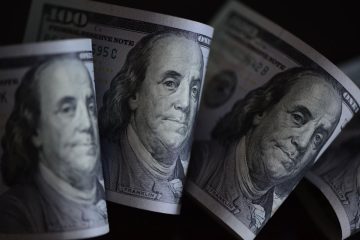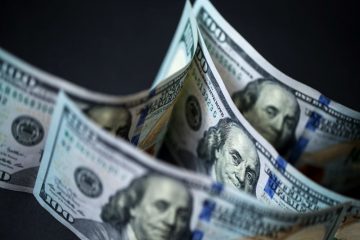| Symbol | Last | Change | % | High | Low |
|---|---|---|---|---|---|
| EUR / USD | 1.1697 | -0.0022 | -0.19% | 1.1727 | 1.1695 |
| Open Last Trade : 02:21 | GMT Time : Mon Jan 05 2026 02:21 | ||||
EUR/USD : Intraday Live Chart
EUR/USD : Technical Signal Buy & Sell
| 5 Min Signal | 1 Hour Signal | 1 Day Signal |
|---|---|---|
| Sell | Sell | Buy |
EUR/USD : Moving Averages
| Period | MA 20 | MA 50 | MA 100 |
|---|---|---|---|
| 5 Minutes | 1.17 | 1.17 | 1.17 |
| 1 Hour | 1.17 | 1.17 | 1.17 |
| 1 Day | 1.17 | 1.17 | 1.16 |
| 1 Week | 1.17 | 1.13 | 1.11 |
EUR/USD : Technical Resistance Level
| Resistance 1 - R1 | Resistance 2 - R2 | Resistance 3 - r3 |
|---|---|---|
| 1.1731 | 1.1746 | 1.1757 |
EUR/USD : Technical Support Level
| Support 1 - S1 | Support 2 - S2 | Support 3 - S3 |
|---|---|---|
| 1.1705 | 1.1694 | 1.1679 |
EUR/USD : Periodical High, Low & Average
| Period | High Change from Last | Low Change from Last | Average Change from Last |
|---|---|---|---|
| 1 Week | 1.1774 -0.0077 | 0.0000 +1.1697 | 1.1736 -0.0039 |
| 1 Month | 1.1797 -0.0100 | 0.0000 +1.1697 | 1.1727 -0.0030 |
| 3 Month | 1.1797 -0.0100 | 0.0000 +1.1697 | 1.1639 +0.0058 |
| 6 Month | 1.1872 -0.0175 | 0.0000 +1.1697 | 1.1663 +0.0034 |
| 1 Year | 1.1872 -0.0175 | 0.0000 +1.1697 | 1.1385 +0.0312 |
EUR/USD : Historical Chart
EUR to USD Exchange Rate History: Tracing the Euro’s Journey Against the Dollar
The EUR to USD exchange rate represents the financial heartbeat of the transatlantic economy, connecting the Eurozone with the United States. As the most traded currency pair globally, EUR/USD plays a pivotal role in international finance, foreign exchange markets, and monetary policy decisions. Its movement reflects economic cycles, interest rate shifts, geopolitical uncertainty, and central bank divergence.
1999–2000s: Launch and Early Volatility
The euro was officially introduced in January 1999 at an initial exchange rate of 1.17 USD. However, skepticism about the new currency and strong U.S. economic growth led to early weakness. By October 2000, EUR/USD had dropped below 0.84—a historic low.
The turning point came in 2002–2003 as investor confidence in the euro strengthened and the U.S. faced a widening fiscal deficit. EUR/USD surged past parity in 2002 and climbed to 1.25 by 2004. The pair peaked at 1.60 in mid-2008 amid a weakening U.S. dollar and strong Eurozone fundamentals before crashing during the global financial crisis.
2010s: Debt Crises, Divergence, and the Draghi Era
The 2010s began with turbulence due to the European sovereign debt crisis. Countries like Greece, Ireland, Portugal, and Spain experienced fiscal instability, leading to a decline in the euro’s value. EUR/USD dropped from 1.45 in 2011 to 1.21 in 2012.
In July 2012, ECB President Mario Draghi’s famous “whatever it takes” speech calmed markets and marked a euro recovery. By 2014, the pair briefly touched 1.39. However, as the U.S. economy recovered faster and the Fed began tapering asset purchases, divergence emerged.
Between 2014 and 2015, the ECB launched quantitative easing while the Fed considered rate hikes. This policy gap caused EUR/USD to plunge to 1.05 by March 2015. The remainder of the decade saw range-bound movement between 1.05 and 1.20.
2020s: Pandemic Shocks, Inflation Surges, and Policy Tightening
In 2020, the COVID-19 pandemic roiled markets. Both the Fed and ECB slashed interest rates and launched massive stimulus. Initially, the dollar rallied as a safe haven, but in the second half of 2020, optimism about global recovery and vaccine rollouts lifted the euro. EUR/USD peaked at 1.23 in January 2021.
In 2022, soaring inflation forced the Fed into aggressive rate hikes, causing the dollar to strengthen dramatically. EUR/USD dropped below parity in July 2022 for the first time in 20 years, reaching 0.96 by September 2022. Meanwhile, the ECB was slower to act, adding to euro weakness.
In 2023, the ECB caught up by tightening policy more aggressively, and the U.S. economy showed signs of slowing. EUR/USD rebounded, oscillating between 1.05 and 1.10. As of April 2025, the pair trades near 1.08, reflecting rate stabilization and moderate inflation on both sides of the Atlantic.
✅ Key:
🟢 = Euro appreciated vs USD
❌ = Euro depreciated vs USD
⚠️ = Minimal change / Range-bound
📊 EUR to USD Exchange Rate by Decade
| Decade | Avg. EUR/USD Rate (Approx) | Change vs. Previous Decade | Key Events |
|---|---|---|---|
| 1999–2000s | 1.17 → 1.43 | 🟢 +22% Euro appreciation | Launch of euro, financial crisis, Fed easing |
| 2010s | 1.43 → 1.12 | ❌ -22% Euro depreciation | EU debt crisis, QE divergence, Draghi guidance |
| 2020s (till 2025) | 1.12 → 1.08 | ⚠️ Range-bound | Pandemic, inflation surge, Fed-ECB tightening cycles |
Historical Accuracy Table for EUR/USD Forecasting
| Year | Annual Avg. Forecast (Consensus) | Actual Avg. Exchange Rate | Forecast Accuracy |
| 2020 | 1.10 | 1.14 | ✅ Accurate |
| 2021 | 1.20 | 1.18 | ✅ Accurate |
| 2022 | 1.17 | 1.05 | ❌ Missed (USD strength shock) |
| 2023 | 1.03 | 1.08 | ❌ Missed (EUR rebound) |
| 2024 | 1.07 | 1.07 | ✅ Accurate |
The EUR/USD currency pair continues to reflect the balance of economic power and monetary policy stance between the world’s two largest economies. Traders and investors closely watch this pair for cues on inflation trends, central bank action, and geopolitical risk across the Eurozone and the United States.
EUR/USD - Euro / US Dollar Exchange Rate
Live Price of EUR/USD. EUR/USD Live Chart, Intraday & Historical Live CharT, Buy Sell Signal, EUR/USD News, EUR/USD Averages, Returns & Historical Data
» EUR/USD
» EUR/USD Real Time Quotes
» EUR/USD Live Chart
» EUR/USD Intraday Chart
» EUR/USD Historical Chart
» EUR/USD Buy Sell Signal
» EUR/USD News
» EUR/USD Videos
» EUR/USD Averages
» EUR/USD Currency Pair
» EUR/USD Historical Data








